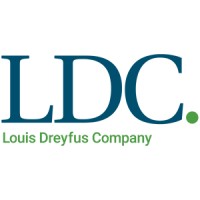
Louis Dreyfus Company Company Cyber Security Posture
ldc.comLouis Dreyfus Company is a leading merchant and processor of agricultural goods. We leverage our global reach and extensive asset network to serve our customers and consumers around the world, delivering the right products to the right location, at the right time – safely, responsibly and reliably. Our activities span the entire value chain from farm to fork, across a broad range of business lines (platforms). Since 1851 our portfolio has grown to include Grains & Oilseeds, Food & Feed Solutions, Coffee, Cotton, Juice, Rice, Sugar, Freight and Global Markets. We help feed and clothe some 500 million people every year by originating, processing and transporting approximately 80 million tons of products. Structured as a matrix organization of six geographical regions and nine platforms, Louis Dreyfus Company is active in over 100 countries and employs approximately 18,000 people globally. For more information, visit www.ldc.com.
LDC Company Details
louis-dreyfus-company
11897 employees
575905.0
311
Food and Beverage Manufacturing
ldc.com
Scan still pending
LOU_1543492
In-progress
Between 900 and 1000
This score is AI-generated and less favored by cyber insurers, who prefer the TPRM score.
 LDC Global Score
LDC Global Score.png)

Louis Dreyfus Company Company Scoring based on AI Models
| Model Name | Date | Description | Current Score Difference | Score |
|---|---|---|---|---|
| AVERAGE-Industry | 03-12-2025 | This score represents the average cybersecurity rating of companies already scanned within the same industry. It provides a benchmark to compare an individual company's security posture against its industry peers. | N/A | Between 900 and 1000 |
Louis Dreyfus Company Company Cyber Security News & History
| Entity | Type | Severity | Impact | Seen | Url ID | Details | View |
|---|
Louis Dreyfus Company Company Subsidiaries

Louis Dreyfus Company is a leading merchant and processor of agricultural goods. We leverage our global reach and extensive asset network to serve our customers and consumers around the world, delivering the right products to the right location, at the right time – safely, responsibly and reliably. Our activities span the entire value chain from farm to fork, across a broad range of business lines (platforms). Since 1851 our portfolio has grown to include Grains & Oilseeds, Food & Feed Solutions, Coffee, Cotton, Juice, Rice, Sugar, Freight and Global Markets. We help feed and clothe some 500 million people every year by originating, processing and transporting approximately 80 million tons of products. Structured as a matrix organization of six geographical regions and nine platforms, Louis Dreyfus Company is active in over 100 countries and employs approximately 18,000 people globally. For more information, visit www.ldc.com.
Access Data Using Our API

Get company history
.png)
LDC Cyber Security News
Indiana port taps Louis Dreyfus to restart grain terminal
Agri-business giant Louis Dreyfus has been selected to operate the multimodal grain terminal at Indiana's Lake Michigan port.
Louis Dreyfus Company Selected to Operate Grain Export at Burns Harbor Port
Considered one of the world's “big four” global agri-commodities companies, LDC reported net sales of $50.6 billion in 2024. Over the years, the ...
News Content Hub - French SOV/CTV owner Louis Dreyfus Armateurs seeking potential investor
French SOV/CTV owner Louis Dreyfus Armateurs seeking potential investor · Update: AP Moller Holdings acquires Svitzer in return to private ...
Cybersecurity in Maritime: Navigating the Digital Seas Safely
Protecting maritime assets, systems, and data from cyber threats has become a critical priority as the industry becomes more connected and reliant on digital ...
Louis Dreyfus Grain Elevator Property Listed for $6.5M
Louis Dreyfus Grain Elevator Property Listed for $6.5M ... Developers hope the prominent Portland parcel with a storied past can host a vibrant ...
Shipping a Successful Cloud Transformation
Planning & Executing an Organization-Wide Cloud Migration to Microsoft Azure for Louis Dreyfus Company. AT A GLANCE. CLIENT. Louis Dreyfus Company ...
Shipping has left gates ‘wide open’ for cyber attacks
Columbia chief executive Mark O'Neil said old software in ships made them vulnerable to Columbia chief executive Mark O'Neil said old software ...
Commodity giant Louis Dreyfus launches its own juice brand
Louis Dreyfus Company (LDC) has launched its own juice brand, starting in France, seeking to use its orange production in Brazil to tap into ...
Louis Dreyfus profits slide as boost from Ukraine war fades
Louis Dreyfus Company, one of the world's biggest traders of coffee, sugar and wheat, suffered a fall in profits and sales as the boost from ...

LDC Similar Companies
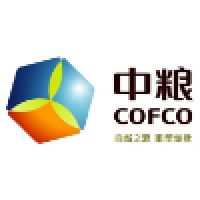
COFCO Corporation
Founded in 1949, COFCO is one of the 53 pillar enterprises under direct administration of the State Council. With years of endeavor, COFCO has developed from a solely trading company of grain and oils into the largest supplier of diversified products and services in the agricultural products and foo
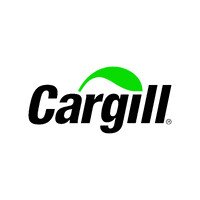
Cargill
Cargill is a family company committed to nourishing the world in a safe, responsible and sustainable way. With over 158 years of experience, we sit at the heart of the supply chain, partnering with producers and customers to source, make and deliver products that are vital for living. Whether it’s m
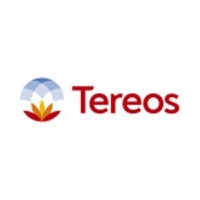
Tereos
The Tereos cooperative group, a union of 10,700 cooperative members, has recognized know-how in the processing of beet, sugar cane, alfalfa and cereals. Through 41 industrial sites, a presence in 15 countries and the commitment of its 15,800 employees, Tereos supports its customers close to their ma

COFCO International
COFCO International is a global agri-business with a clear vision, strong values and a positive culture, focused on being a leader in the global grains, oilseeds and sugar supply chains. We provide the food the world needs in a responsible way. Headquartered in Geneva, Switzerland, we are ambitious
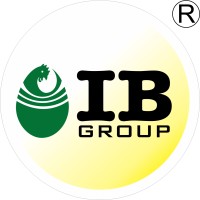
ABIS Exports India Private Limited. IB Group
IB Group - India's largest protein-centric Agri-biz conglomerate with a turnover of INR 9700 Crore in FY 2023 headquartered in Chhattisgarh's Rajnandgaon district. The company has been synonymous with excellence and poultry since 1985 and is the first Poultry Company to be certified as a Great Place
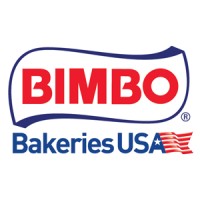
Bimbo Bakeries USA
Have you ever started your morning with a Thomas’® English muffin or bagel? Or bitten into the perfect slice of Sara Lee® bread? Do you break open a fresh box of Entenmann’s® donuts at family gatherings? If so, you’re already a fan of Bimbo Bakeries USA – the powerhouse behind these iconic brands!

Frequently Asked Questions
Explore insights on cybersecurity incidents, risk posture, and Rankiteo's assessments.
LDC CyberSecurity History Information
How many cyber incidents has LDC faced?
Total Incidents: According to Rankiteo, LDC has faced 0 incidents in the past.
What types of cybersecurity incidents have occurred at LDC?
Incident Types: The types of cybersecurity incidents that have occurred include .
Incident Details
What are the most common types of attacks the company has faced?
Additional Questions
What Do We Measure?
















Every week, Rankiteo analyzes billions of signals to give organizations a sharper, faster view of emerging risks. With deeper, more actionable intelligence at their fingertips, security teams can outpace threat actors, respond instantly to Zero-Day attacks, and dramatically shrink their risk exposure window.
These are some of the factors we use to calculate the overall score:
Identify exposed access points, detect misconfigured SSL certificates, and uncover vulnerabilities across the network infrastructure.
Gain visibility into the software components used within an organization to detect vulnerabilities, manage risk, and ensure supply chain security.
Monitor and manage all IT assets and their configurations to ensure accurate, real-time visibility across the company's technology environment.
Leverage real-time insights on active threats, malware campaigns, and emerging vulnerabilities to proactively defend against evolving cyberattacks.




